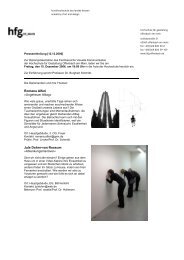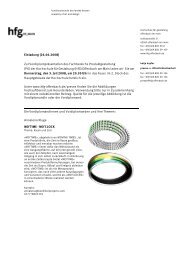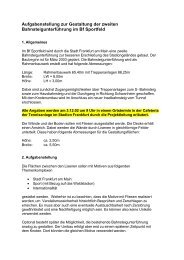User Manual
User Manual
User Manual
Create successful ePaper yourself
Turn your PDF publications into a flip-book with our unique Google optimized e-Paper software.
Grip display<br />
Typical camera grip display. (The information in brackets describes this particular example only).<br />
Flash condition indication<br />
(No exposure compensation,<br />
normal flash synchronisation)<br />
Aperture setting<br />
(f/5.6)<br />
Exposure Value display<br />
(EV 9.3)<br />
Exposure mode indication<br />
(Aperture priority setting)<br />
Typical camera grip display when changing settings.<br />
Focus setting<br />
(Autofocus setting, single<br />
shot mode)<br />
Metering method<br />
indication<br />
(Centre weighted)<br />
Command indication<br />
The upper row on the screens describes commands (which<br />
change according to the setting). The button immediately above<br />
each command effects the change. So in this case, for example,<br />
you would press the FLASH button to ‘exit’ from the screen.<br />
See note below.<br />
Settings symbols<br />
Symbolize the options available when settings are changed.<br />
The active symbol is depicted by a drop shadow.<br />
Control wheel description and direction<br />
Arrowheads symbolize which control wheel should be used to<br />
change the setting they are beside. In this case, the Bracketing<br />
option is chosen by the front control wheel and the number of<br />
captures in that option is chosen by the rear control wheel.<br />
10<br />
White balance<br />
(Daylight)<br />
. . . = front control wheel<br />
= rear control wheel<br />
Drive condition<br />
(Single setting)<br />
Shutter speed setting<br />
(1/400s)<br />
ISO setting<br />
(50 ISO/ASA)<br />
Low battery symbol<br />
‘Capture counter’<br />
(1286 shots remaining on<br />
chosen storage medium)<br />
Setting information<br />
The lower row on the screen displays information about the current<br />
state of the setting. In short, the upper row displays what you<br />
can do, and the lower row displays the current state of settings or<br />
what you have done.









![Einladung [07.02.2006] - Hochschule für Gestaltung Offenbach am ...](https://img.yumpu.com/13375413/1/184x260/einladung-07022006-hochschule-fur-gestaltung-offenbach-am-.jpg?quality=85)






